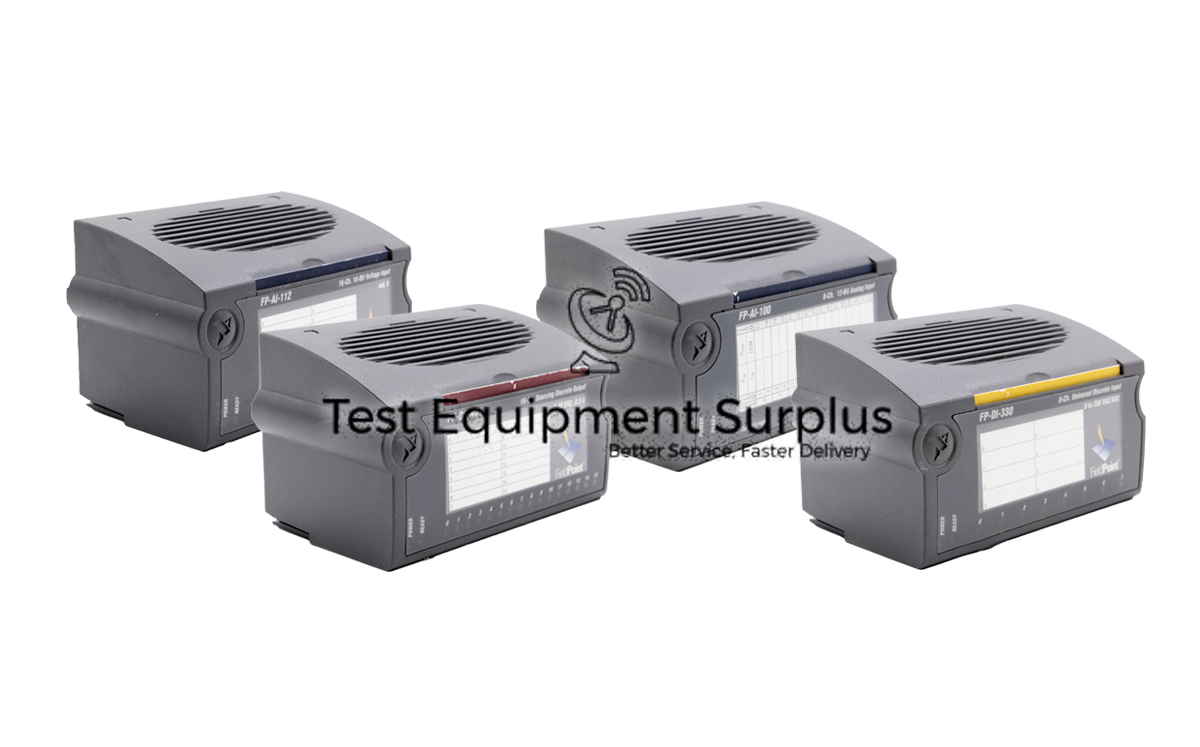Description
The National Instruments FP-TB-3 FieldPoint Isothermal Terminal Base, identified by part number 777519-03, is designed with a total of 18 screw terminals, including 16 numbered terminals and 2 dedicated C channel terminals for thermocouple connections. Manufactured by National Instruments, this terminal base can handle a maximum total current of 10 A through its V and C terminals.
For current draws less than 3 A, one terminal can serve as the return path, while current draws exceeding 3 A necessitate the use of individual C terminals for optimal performance. The FP-TB-3 is primarily engineered to complement the FP-TC-120 module, although it remains compatible with other I/O modules that occupy terminals 1 to 16 and do not require external power.
Featuring an isothermal construction, the FP-TB-3 terminal base effectively minimizes thermal gradients, enhancing the accuracy of temperature measurements. To assess the thermal gradient impact from adjacent FieldPoint modules, one should calculate the gradient by dividing the greater amount of heat dissipation by the adjacent modules by 11 W/°F.
| Specification | Detail |
|---|---|
| Part Number | FP-TB-3 |
| Description | National Instruments FP-TB-3 FieldPoint Isothermal Terminal Base |
| Manufacturer | National Instruments |
| Ordering Part Number | 777519-03 |
| Terminal Count | 18 screw terminals (16 numbered, 2 dedicated C channel terminals) |
| Maximum Total Current | 10 A through V and C terminals |
| Current Draw Considerations | Use one terminal for the return path if current draw is less than 3 A, utilize individual C terminals if over 3 A |
| Compatible Modules | Primarily for FP-TC-120 module, but also for I/O modules using terminals 1 to 16 |
| Construction | Isothermal construction to decrease thermal gradients |
| Thermal Gradient Evaluation | Divide the higher of the heat dissipated by adjacent modules by 11 W/°F |
Question 1: What is the significance of the isothermal construction of the National Instruments FP-TB-3 FieldPoint Isothermal Terminal Base, and how is the thermal gradient impact from adjacent FieldPoint modules calculated?
Answer 1: The isothermal construction of the National Instruments FP-TB-3 FieldPoint Terminal Base is significant because it minimizes thermal gradients, thereby enhancing the accuracy of temperature measurements taken with the terminal base.
Question 2: How does the National Instruments FP-TB-3 FieldPoint Isothermal Terminal Base manage high current draws, and with which module is it primarily engineered to work?
Answer 2: The National Instruments FP-TB-3 FieldPoint Isothermal Terminal Base manages high current draws exceeding 3 A by requiring the use of individual C terminals for each connection to ensure optimal performance, and it is primarily engineered to work with the FP-TC-120 module.
Question 3: Considering the specifications provided for the National Instruments FP-TB-3 FieldPoint Isothermal Terminal Base, how should one calculate the thermal gradient impact from adjacent FieldPoint modules to ensure accurate temperature measurements?
Answer 3: To calculate the thermal gradient impact from adjacent FieldPoint modules on the National Instruments FP-TB-3 Isothermal Terminal Base, divide the amount of heat dissipation by the adjacent modules by the factor of 11 W/°F.
Question 4: What is the significance of the isothermal construction in the National Instruments FP-TB-3 FieldPoint Terminal Base with respect to temperature measurement accuracy?
Answer 4: To calculate the thermal gradient impact from adjacent FieldPoint modules on the National Instruments FP-TB-3 FieldPoint Isothermal Terminal Base, one should divide the amount of heat dissipation from the adjacent modules by 11 W/°F to assess the potential effect on temperature measurement accuracy.
Question 5: What is the process for calculating the thermal gradient impact from adjacent FieldPoint modules on the National Instruments FP-TB-3 Isothermal Terminal Base?
Answer 5: The isothermal construction of the National Instruments FP-TB-3 FieldPoint Isothermal Terminal Base is significant because it reduces thermal gradients, thereby enhancing the accuracy of temperature measurements; the thermal gradient impact from adjacent FieldPoint modules is calculated by dividing the greater amount of heat dissipation by those modules by 11 W/°C.




